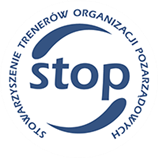A little bit of will and knowledge
When he faced the task of creating a new page of the Centre, has decided that it will be fully accessible to blind and visually impaired people – so that it will be also accessible to himself.
An interview conducted by Olga Kożuchowska with Przemysław Waksbert.
Is the work with computers your passion?
Information technology is not your first profession, you have already reskilled as an adult. Did this training course include the needs of blind and visually impaired people?
Did you as the first person in the Centre bring the principle of accessibility of the website?
Then I applied to the project run by the Centre of Integration Association in which I could work on the accessibility of the site. Site audit was carried out. It turned out that the site is largely accessible. It required some minor amendments, such as: the contrast was too big or too small, the font was to little, lacking some mechanisms to facilitate the use of the site by using the keyboard. The adaptation process took about a month.
You mentioned that it you were a volunteer for the company IVONA Software. Was that the only volunteering experience?
Also I get involved in organizing picnics for Rainbow House Foundation, during which we raise money to build a house for full time care for people with coupled disabilities eg. with cerebral palsy. I’m on this picnic DJ – as DJ is my second hobby.
Let’s turn back to the issue of accessibility. Would you recommend to organizations, institutions that are preparing to make their pages accessible? What should be included in the Ten Commandments of availability?
- First of all, readability, which is a white background with black text, or vice versa.
- Appropriately large font, depending on the amount of information that we want to put in it. The font size of around 16-18 points.
- Colour contrast, you can not use a white font on a light green background. I understand the aesthetic but it is illegible. I suspect that people who see well have difficulty seeing or reading similar texts. Ability to choose colors is essential.
- If possible, avoid the use of Flash technology. I understand that it gives a lot of opportunities, but from the point of view of the visually impaired or blind practically excludes the use of the site.
- The worst is text embedded as graphics. This is something that can not be read. This is one of the requirements of the WCAG standards, that PDF documents should be prepared as text – no pictures and text. This can be explained on the example of the documents relating to public procurement. Documents bearing the stamp and signature of the directorate should be upload on the site. I found a way to obtain such documents. At the start I scan it and then I use OCR software (the most popular Fine Reader) process and save as PDF and image which is superimposed text.
And what about mobile apps?
Where to be informed about this?
Besides we should be guided by common sense and empathy. Creating accessible web site requires only a little bit of good will, common sense and a little knowledge.

